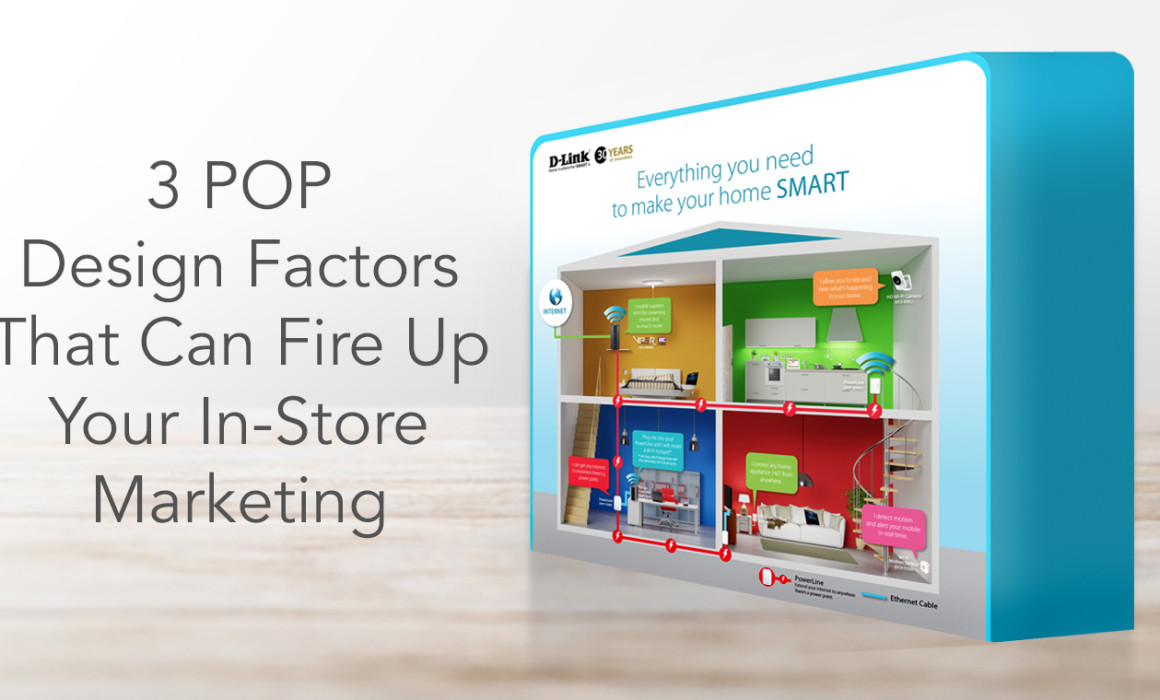3 POP Design Factors That Can Fire Up Your In-Store Marketing
Your latest point-of-purchase or POP design boasts of punchy copy, clever layout and eye-catching colours. It was produced using premium materials. It even shows off up-to-the-minute features such as motion-triggered audio and interactive video. Are these enough to sell your product?
Unfortunately, today’s retail environment is not what it used to be. The once tried-and-tested methods that your creative team has mastered will not suffice anymore. It is for this reason that you should start sending your design people out of the studio and off to the ‘real world’ in order for them to conceive POP designs that answer the retail marketing issues at hand.
As your creative team surveys the actual retail situation, see to it that they take note of the following factors that can strengthen your POP display design and multiply your sales.
POP Design Factor 1: Purpose
Whilst the ultimate aim of any retail campaign is for the shopper to pick your product, your team should give equal weight to the more specific objectives. For instance, are you introducing a new variant or offering a discount for bulk purchases? Do you want to educate your market about good eating habits through meal suggestions and bundling promos? Knowing such details can guide your creative team in choosing the POP display design that will work to meet these goals.
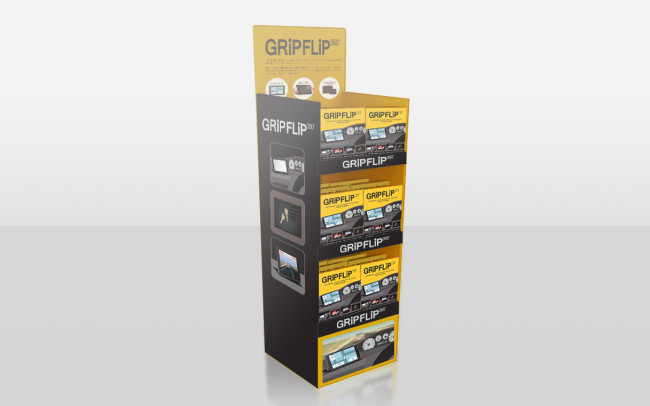
A well-designed product display floor stand can easily draw attention to your new product or latest sales promo. Depending on the duration of your in-store campaign, this type of POP display can be produced out of light materials such as cardboard or more durable ones like acrylic and wood.

A shelf product display stand offers limited working space compared with a floor stand, so your creative team should observe brevity with your messaging. For products that require more information, you can opt for built-in video like the POP display pictured above.
With numerous options and variations available, deciding on the most purposeful POP display can be overwhelming. To steer your buyers towards the exact location of your product, which should you choose: floor stickers or hanging arrow signs? Would an end cap with video fare better than a row of wobblers at highlighting your product’s benefits? Do spinners allow easier access to your various products than a simple display stand? It is therefore ideal for your creative team to communicate with the production group as the latter can recommend the type of retail display and materials most fitting to your campaign objectives.

Suspended from the ceiling, hanging signs let you take advantage of the less cluttered space above your customers’ heads.

Conversely, floor stickers make the most out of the space under your buyers’ feet and are effective at directing prospects towards your product.
POP Design Factor 2: Location
Each establishment has its own unique characteristics. Is it upscale or budget-friendly? Does it cater to young families or retirees? Are the interiors minimalist or cluttered? Consider the shop’s branding to prevent your POP design from coming across like tacky or elitist to customers.

Know the establishment that will house your POP display. For instance, a store that follows minimalist trends might accept only simple retail displays.
Then there’s the store’s display guidelines. Where in the establishment will your POP display be positioned? How much space can it occupy? How long are you allowed to maintain your retail display? Understanding the rules and general store layout ensures that your setup gets approved and that you do not spend more than what is required for your campaign.
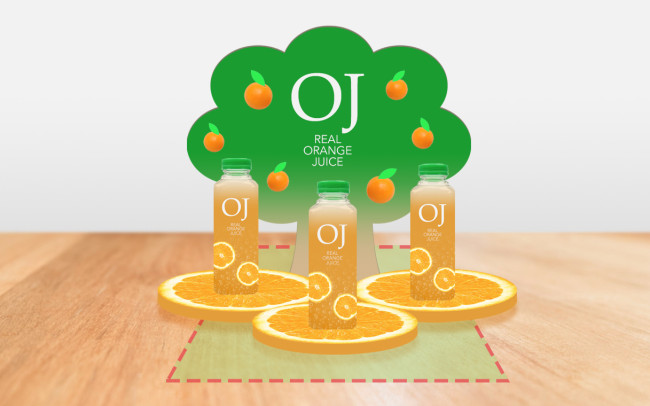
A POP display that violates store guidelines, such as this display that goes beyond the allowed space, might be removed by the store management, especially if it poses a hazard to shoppers.
Lastly, be aware that themes can change from month to month or season to season, and this usually affects the store’s overall look. Check with your creative team if your POP design is appropriate to the occasion being observed to increase engagement.
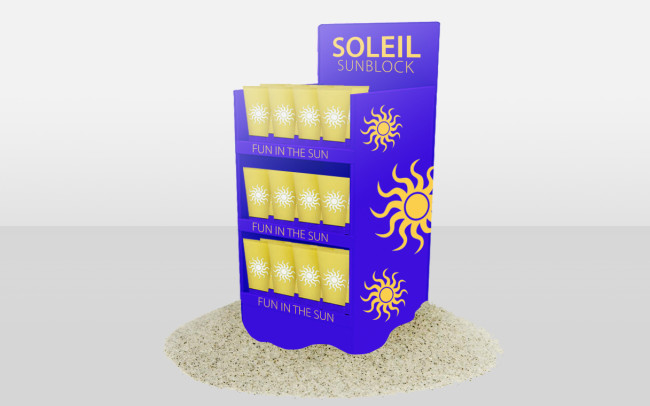
Customers are more likely to flock to your POP display if its design and messaging are relevant to their current mood and needs.
POP Design Factor 3: Competition
With a great number of products hogging today’s retail limelight, it is a challenge to stand out from the other brands, much more the big and established ones. Even if you picked a strategic spot for your product and POP display, chances are they are still next to a similar product nestled in an equally attractive display stand.
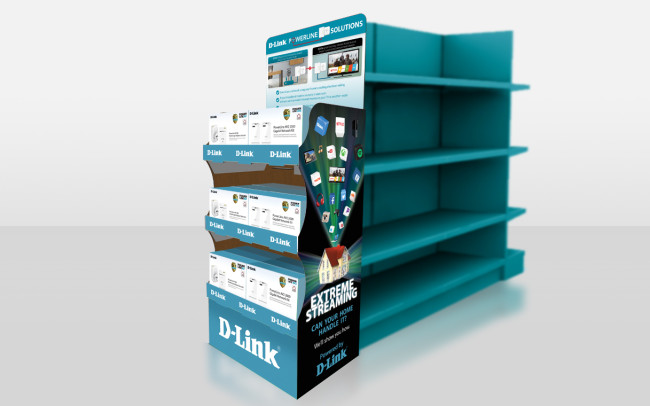
End caps offer greater visibility for your brand because your products get their own special space instead of standing alongside competitors. Their roominess also allows more creativity for your design team.
It is important, therefore, for you to paint a crystal clear picture of the competition. How many brands are fighting for your target market’s attention? How can your POP design make your product more noticeable than the others? More importantly, how can your retail display design show customers that your product is a decent alternative to the leading brand without copying the competitor’s visual elements? Answering these questions can help your graphic designer to choose the most appropriate layout, colour, and font for your retail marketing campaign.

A retail display that looks like a cheap imitation of the competitor’s design approach could turn prospective buyers off. Hire a great design team that can make your POP display exude the same confidence of top brands yet still be more eye-catching than their displays.
Providing your creative team with a comprehensive brief and whisking them off to where the action is–the retail floor–might add several hours to your lead time. Still, let such a delay take place. When your creative team appreciates the challenges faced by your brand, they will be able to think of new and more cost-effective ways to showcase your products.
Aside from these three, what other considerations do you need to tell your POP designer?

